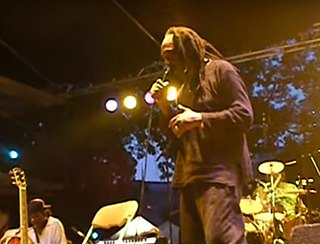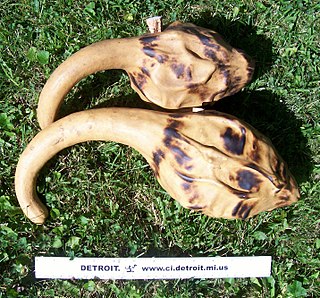
Mbira are a family of musical instruments, traditional to the Shona people of Zimbabwe. They consist of a wooden board with attached staggered metal tines, played by holding the instrument in the hands and plucking the tines with the thumbs, the right forefinger, and sometimes the left forefinger. Musicologists classify it as a lamellaphone, part of the plucked idiophone family of musical instruments. In Eastern and Southern Africa, there are many kinds of mbira, often accompanied by the hosho, a percussion instrument. It is often an important instrument played at religious ceremonies, weddings, and other social gatherings. The "Art of crafting and playing Mbira/Sansi, the finger-plucking traditional musical instrument in Malawi and Zimbabwe" was added to the UNESCO Representative List of the Intangible Cultural Heritage of Humanity in 2020.

Zimbabwean music is heavily reliant on the use of instruments such as the mbira, Ngoma drums and hosho. Their music symbolizes much more than a simple rhythm, as the folk and pop style styled music was used as a symbol of hope for Zimbabweans looking to gain independence from Rhodesia. Music has played a significant role in the history of Zimbabwe, from a vital role in the traditional Bira ceremony used to call on ancestral spirits, to protest songs during the struggle for independence. The community in Zimbabwe used music to voice their resistance to their oppression, as one of the only weapons they had available to fight back with. In the eighties, the Music of Zimbabwe was at the center of the African Music scene thanks to genres such as Sungura and Jit. However, several performers were banned by state TV and radio leading to the closing of several music venues.

Thomas Tafirenyika Mapfumo is a musician nicknamed "The Lion of Zimbabwe" and "Mukanya" for his immense popularity and for the political influence he wields through his music, including his sharp criticism of the government of former Zimbabwean president Robert Mugabe. He both created and made popular Chimurenga music, and his slow-moving style and distinctive voice is instantly recognisable to Zimbabweans.

The hosho are Zimbabwean musical instruments consisting of a pair of maranka (mapudzi) gourds with seeds. They are used as major instruments in many traditional Shona music genres, such as in mbira ensembles and in mhande. They typically contain hota seeds inside them. Before the hota seeds are added, the hosho is boiled in salted water and the inside is scraped out with a corncob, newspaper plug, or woven wire. Removing the debris inside the hosho allows for a more sharp and percussive tone.
Leonard Tazvivinga Dembo, a.k.a Kwangwari Gwaindepi also Musoro We Nyoka, was a Zimbabwean guitar-band musician and member of the bands Barura Express and The Outsiders. Incorporating traditional Shona sayings in his lyrics, his musical style was sungura-based, played on electric guitars tuned to emulate the characteristic sounds of the mbira.
Shona music is the music of the Shona people of Zimbabwe. There are several different types of traditional Shona music including mbira, singing, hosho and drumming. Very often, this music will be accompanied by dancing, and participation by the audience. In Shona music, there is little distinction between the performer and the audience, both are often actively involved in the music-making, and both are important in the religious ceremonies where Shona music is often heard.
Ephat Mujuru (1950–2001), was a Zimbabwean musician, one of the 20th century's finest players of the mbira, a traditional instrument of the Shona ethnic group of Zimbabwe.
Abraham Dumisani Maraire, known to friends as "Dumi", was a Zimbabwean musician. He was a master performer of the mbira, a traditional instrument of the Shona people of Zimbabwe. He specialized in the form of mbira called nyunga nyunga, as well as the Zimbabwean marimba. He introduced Zimbabwean music to North America, initiating a flourishing of Zimbabwean music in the Pacific Northwest that continues into the 21st century.

The Shona people are a Bantu ethnic group native to Southern Africa, primarily living in Zimbabwe where they form the majority of the population, as well as Mozambique, South Africa, and a worldwide diaspora. There are five major Shona language/dialect clusters: Manyika, Karanga, Zezuru, Korekore, and Ndau.

Stella Chiweshe was a Zimbabwean musician. She was known internationally for her singing and playing of the mbira dzavadzimu, a traditional instrument of the Shona people of Zimbabwe. She was one of few female players, and learned to play from 1966 to 1969, when other women did not.

Ngoma are musical instruments used by certain Bantu populations of Africa. Ngoma is derived from the Kongo word for "drum". Different Bantu-inhabited regions have their own traditions of percussion, with different names for their instruments. In Kikongo, "ngoma" is used by extension to signify specific dances, social occasions, and rhythms. In Swahili, Ngoma music is used to describe music, dance, instruments including the drums, and events together as a joint cultural practice.

In Zimbabwean Shona music, a deze is a halved calabash gourd that an mbira is placed into to amplify its sound. It is typically round and has bottle caps, shells or other objects strung around its perimeter to vibrate with the mbira, creating a buzzing sound. Cracked deze frequently are repaired by wire stitching. Because of the size of the deze, audience members cannot see the mbira players' hands. Because of this, it is not uncommon for those who want to learn the mbira to play the hosho first, so that they can stand behind the players to see into deze and learn by observation. Modern deze are often constructed out of fiberglass and epoxy for increased durability. However, some mbira players, like Chartwell Dutiro, critique the use of fiberglass dezes in live performance. Dutiro says it compromises the resonance of the mbira and thus hinders communication with dza vadzimu.
Erica Kundidzora Azim is a musician based in Berkeley, California, who is associated with a not-for-profit organisation.

Chris Berry is an American singer, songwriter, and musician. He plays the mbira and the ngoma drum, from the Shona people of Southern Africa. His records with the band Panjea have gone platinum in Zimbabwe and Mozambique. He has released over a dozen albums; scored the soundtrack for three films; and collaborated and performed with many other artists.

Chiwoniso Maraire was a Zimbabwean singer, songwriter, and exponent of Zimbabwean mbira music. She was the daughter of Zimbabwean mbira master and teacher Dumisani Maraire. Describing the mbira, an instrument traditionally used by male musicians, she said, "It is like a large xylophone. It is everywhere in Africa under different names: sanza, kalimba, etc. For us in Zimbabwe it is the name for many string instruments. There are many kinds of mbiras. The one that I play is called the nyunga nyunga, which means sparkle-sparkle."

Dancing in Zimbabwe is an important aspect of the Zimbabwean culture, tradition, spirituality and history. There are many dances that reflect the culture of the people, although the dances may have changed throughout the years. Ethnic diversity is also a key factor in influencing the dances of the Zimbabwean culture. These dances are self-reflective, for the entire community because all music and dance are communal events. Dance to Zimbabweans is a very spiritual, powerful tool that carries on traditions, and chronicles the important events of their history and culture.

The matepe is a type of lamellophone played in North-Eastern Zimbabwe. It is primarily played by the Sena Tonga and the Kore-Kore peoples which are subgroups of the Shona people.
Bira is an all-night ritual, celebrated by Shona people from Zimbabwe in which members of an extended family call on ancestral spirits for guidance and intercession. Shona people believe that the only ones who can communicate with both the living and God are the ancestral spirits, or dzavadzimu. These spirits are summoned during the Bira ceremonies through the use of music and ritual dance. Bira ceremonies are also held to welcome back the spirit of an ancestor into the home where a family member is a svikiro who is occasionally possessed by one or more ancestors.

Mbira DzeNharira was formed by Tendayi Gahamadze in 1987 in Norton, a town 40 km west of Harare. To date they have released 11 CD and 3 DVD albums.
Mhande is a traditional performance practiced among the Shona people, involving music and dance. It is a vital element of the mutoro ceremony, an annual rain ritual of the Karanga.













